Career


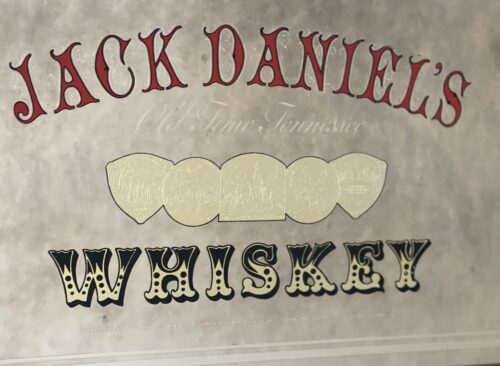



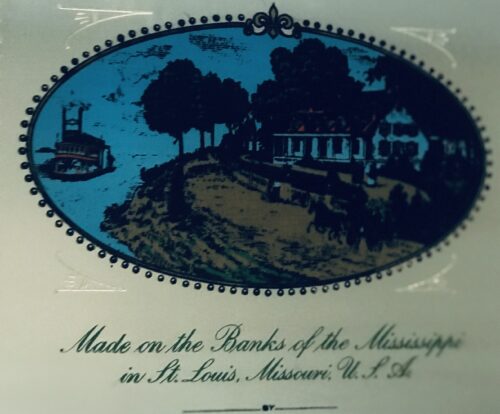
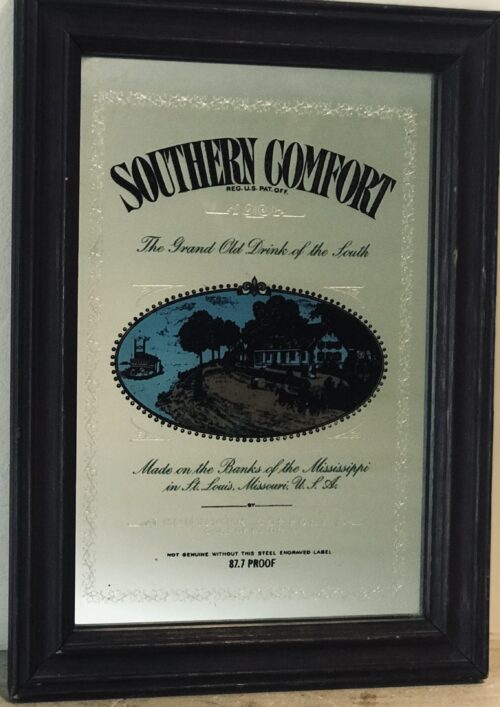

An inch of vanilla bean, about a quarter of a lemon, half of a cinnamon stick, four cloves, a few cherries, and an orange bit or two. He would let this soak for days. And right when he was ready to finish, he would add his sweetener: he liked to use honey.The original brand closed during Prohibition and was reopened afterward by Francis Fowler. Between the 1930s and 2010, the image on the label of Southern Comfort was A Home on the Mississippi, a rendering by Alfred Waud depicting Woodland Plantation, an antebellum mansion in West Pointe à la Hache, Louisiana, which is listed on the National Register of Historic Places, and now provides bed-and-breakfast accommodation. In 2010 the plantation artwork was dropped from the label. Brown–Forman purchased the brand in 1979. In 2011, the brand began releasing flavored variations like cherry, lime, gingerbread, and Tabasco. In January 2016 Brown–Forman sold it to Sazerac Company, along with Tuaca, as part of a $543.5 million deal. Sazerac announced that Southern Comfort's formula would be changed in 2017 to restore whiskey as the base spirit, as the original formula used. Sometime before Brown–Forman purchased the brand, it had been reformulated to use neutral spirit, with only a negligible amount of whiskey as a flavorant. Janis Joplin was known to drink Southern Comfort to excess.
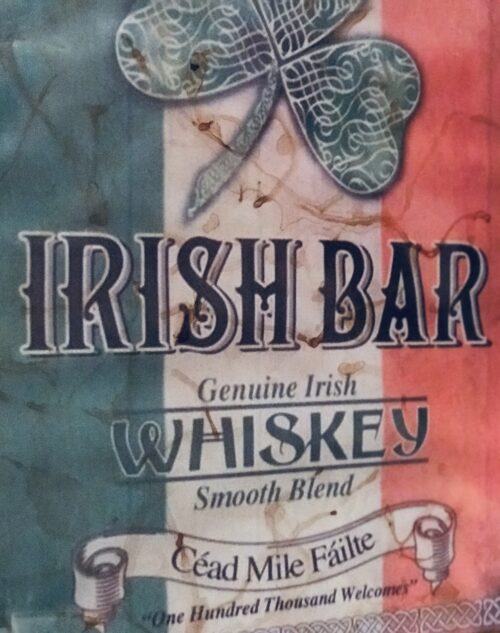
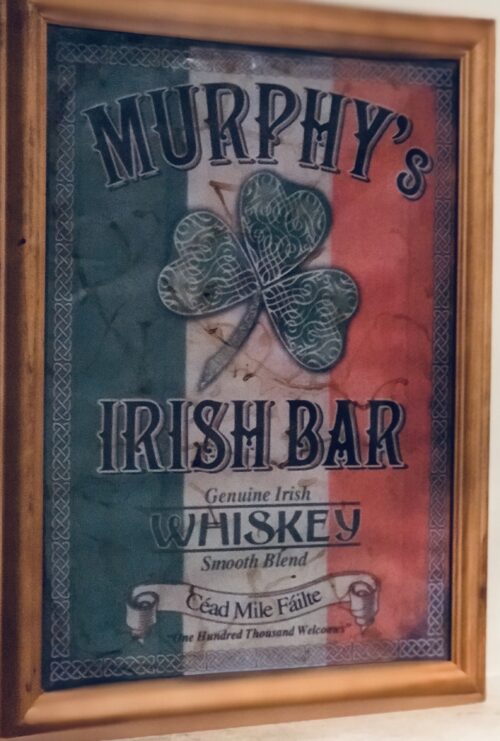






The 80s was a time when Ulster football was considered a distant cousin to the majesty of Kerry, even when the Kingdom's golden age was ending.
But such was Tyrone's initial dominance of the 1986 All-Ireland final against Kerry by half-time their fans began to panic about not having accommodation in Dublin that night. They needn't have worried as a seven-point lead turned into an eight-point pounding in the final 20 minutes.
The crucial moment was a Tyrone penalty, which was sent over the bar by Kevin McCabe. From the kick-out, Kerry whizzed downfield and Pat Spillane finished the move with a goal that reduced the arrears to four points. A Mikey Sheehy goal completed a nightmarish capitulation.
It was the last hurrah from a great Kerry team who had taken Sam Maguire home eight times in 12 years. An 11-year drought followed.
Moy's Plunkett Donaghy was Tyrone's class act back then but the loss of Eugene McKenna and John Lynch through injury coincided with the late collapse.
Moy send another marauding midfielder out against Kerry on Sunday in Seán Cavanagh along with clubmates Philip Jordan and Ryan Mellon.
KERRY: C Nelligan; P Ó Sé, S Walsh, M Spillane; T Doyle (captain), T Spillane, G Lynch; J O'Shea, A O'Donovan; W Maher, D Moran (0-2), P Spillane (1-4); M Sheehy (1-4, three points from frees), E Liston (0-2), G Power (0-1). Sub: T O'Dowd (0-2) for O'Donovan.
TYRONE: A Skelton; J Mallon, K McGarvey, J Lynch; K McCabe (0-1, from a penalty), N McGinn, P Ball; P Donaghy, H McClure; M McClure (0-1), E McKenna, S McNally (0-2); M Mallon (0-4, three frees), D O'Hagan (0-1), P Quinn (1-1). Subs: S Conway for Lynch, S Rice for McKenna, A O'Hagan for M Mallon.

 Source: Billy Stickland/INPHO
2. Sylvie Linnane (Gort)
Linnane was a teak tough corner back who took no prisoners.
A farmer who also hires out machinery, Linnane has dabbled in coaching and retains very strong links with his home club, Gort.
Sylvie’s three sons, Sylvie Óg, Tadhg and Darragh, won Galway senior club hurling medals with Gort last year.
Source: Billy Stickland/INPHO
2. Sylvie Linnane (Gort)
Linnane was a teak tough corner back who took no prisoners.
A farmer who also hires out machinery, Linnane has dabbled in coaching and retains very strong links with his home club, Gort.
Sylvie’s three sons, Sylvie Óg, Tadhg and Darragh, won Galway senior club hurling medals with Gort last year.
 Source: James Crombie/INPHO
3. Conor Hayes (Kiltormer)
Hayes is the last Galway man to lift the Liam MacCarthy Cup on Galway’s behalf.
The Kiltmorer man was skipper of the 1987 and 1988 All-Ireland winning teams and was manager in 2005 when Galway lost the final to Cork.
He strongly believes that the Tribesmen can end a 27-year famine and shared his views with The42 in this piece.
Source: James Crombie/INPHO
3. Conor Hayes (Kiltormer)
Hayes is the last Galway man to lift the Liam MacCarthy Cup on Galway’s behalf.
The Kiltmorer man was skipper of the 1987 and 1988 All-Ireland winning teams and was manager in 2005 when Galway lost the final to Cork.
He strongly believes that the Tribesmen can end a 27-year famine and shared his views with The42 in this piece.
 Source: James Crombie/INPHO
4. Ollie Kilkenny (Kiltormer)
Kilkenny was a key member of the successful Kiltormer teams of the 1980s and 1990s, and won two All-Ireland senior medals with Galway in 1987 and 1988.
A psychiatric nurse by profession, Kilkenny formed one-third of a revered full-back line alongside clubmate Conor Hayes and Sylvie Linnane.
Ollie’s sons Jason and Keith won Nicky Rackard Cup medals with Roscommon this year.
Source: James Crombie/INPHO
4. Ollie Kilkenny (Kiltormer)
Kilkenny was a key member of the successful Kiltormer teams of the 1980s and 1990s, and won two All-Ireland senior medals with Galway in 1987 and 1988.
A psychiatric nurse by profession, Kilkenny formed one-third of a revered full-back line alongside clubmate Conor Hayes and Sylvie Linnane.
Ollie’s sons Jason and Keith won Nicky Rackard Cup medals with Roscommon this year.
 Source: James Crombie/INPHO
5. Peter Finnerty (Mullagh)
Part of one of the most revered half-back lines of all time, Finnerty went on to become a hurling analyst with RTÉ on The Sunday Game.
Involved in the Supermac’s franchise in Tuam, Finnerty was coach of the Mayo hurlers from 2007-2010.
On the eve of Sunday’s final, Finnerty will host a Bord Gáis Energy Legends Tour at Croke Park.
Source: James Crombie/INPHO
5. Peter Finnerty (Mullagh)
Part of one of the most revered half-back lines of all time, Finnerty went on to become a hurling analyst with RTÉ on The Sunday Game.
Involved in the Supermac’s franchise in Tuam, Finnerty was coach of the Mayo hurlers from 2007-2010.
On the eve of Sunday’s final, Finnerty will host a Bord Gáis Energy Legends Tour at Croke Park.
 Source: James Crombie/INPHO
6. Tony Keady (Killimordaly)
Keady was a member of the Galway U21 backroom team this year, working alongside boss Johnny Kelly.
Currently caretaker at Calasanctius College in Oranmore, Keady coached the school to a first ever senior B title this year.
In 1989, the build-up to the All-Ireland semi-final against Tipperary was overshadowed by the ‘Tony Keady affair’, when the majestic centre back was suspended.
Source: James Crombie/INPHO
6. Tony Keady (Killimordaly)
Keady was a member of the Galway U21 backroom team this year, working alongside boss Johnny Kelly.
Currently caretaker at Calasanctius College in Oranmore, Keady coached the school to a first ever senior B title this year.
In 1989, the build-up to the All-Ireland semi-final against Tipperary was overshadowed by the ‘Tony Keady affair’, when the majestic centre back was suspended.
 Source: Billy Stickland/INPHO
7. Gerry McInerney (Kinvara)
The man with the famous white boots now runs a sports shop in Oranmore.
McInerney is still involved in farming and his son, Gearóid, is a member of the Galway senior panel preparing for Sunday’s final.
Gearóid made his first championship start against Dublin in the drawn Leinster championship match at Croke Park this year.
Gerry played in a Galway senior hurling final for Kinvara as recently as 2007, when he was 42 years of age.
Source: Billy Stickland/INPHO
7. Gerry McInerney (Kinvara)
The man with the famous white boots now runs a sports shop in Oranmore.
McInerney is still involved in farming and his son, Gearóid, is a member of the Galway senior panel preparing for Sunday’s final.
Gearóid made his first championship start against Dublin in the drawn Leinster championship match at Croke Park this year.
Gerry played in a Galway senior hurling final for Kinvara as recently as 2007, when he was 42 years of age.
 Source: Morgan Treacy/INPHO
8. Michael Coleman (Abbeyknockmoy)
Midfielder Coleman was involved in finance and qualified as a teacher.
Heavily involved in the juvenile ranks at Abbeyknockmoy, Coleman was the club’s hurling board delegate and manager of the U15 and U16 teams this year.
Michael was also the coach to the Leitrim senior hurlers in 2015 and his son, Dara, has been earmarked as one to watch in future years.
Source: Morgan Treacy/INPHO
8. Michael Coleman (Abbeyknockmoy)
Midfielder Coleman was involved in finance and qualified as a teacher.
Heavily involved in the juvenile ranks at Abbeyknockmoy, Coleman was the club’s hurling board delegate and manager of the U15 and U16 teams this year.
Michael was also the coach to the Leitrim senior hurlers in 2015 and his son, Dara, has been earmarked as one to watch in future years.
 Source: James Crombie/INPHO
9. Pat Malone (Oranmore-Maree)
Malone won All-Ireland medals in 1987 and 1988 and went on to become an Allstar in 1993.
A key member of Anthony Cunningham’s Galway senior backroom team, Malone is also involved with his home club Oranmore-Maree.
Coleman’s son, Ross, is a member of the Galway minor hurling panel.
Source: James Crombie/INPHO
9. Pat Malone (Oranmore-Maree)
Malone won All-Ireland medals in 1987 and 1988 and went on to become an Allstar in 1993.
A key member of Anthony Cunningham’s Galway senior backroom team, Malone is also involved with his home club Oranmore-Maree.
Coleman’s son, Ross, is a member of the Galway minor hurling panel.
 Source: Alan Betson/INPHO
10. Anthony Cunningham (St Thomas’)
Galway’s current senior hurling boss has made quite a name for himself in coaching since his playing days.
He enjoyed huge football success with Roscommon club side St Brigid’s and Garrycastle in Westmeath before guiding Galway’s U21 hurlers to All-Ireland glory in 2011.
He’s in his fourth season as the county’s senior hurling boss and hoping to mastermind a first Liam MacCarthy Cup success since 1988 on Sunday.
Source: Alan Betson/INPHO
10. Anthony Cunningham (St Thomas’)
Galway’s current senior hurling boss has made quite a name for himself in coaching since his playing days.
He enjoyed huge football success with Roscommon club side St Brigid’s and Garrycastle in Westmeath before guiding Galway’s U21 hurlers to All-Ireland glory in 2011.
He’s in his fourth season as the county’s senior hurling boss and hoping to mastermind a first Liam MacCarthy Cup success since 1988 on Sunday.
 Source: Cathal Noonan/INPHO
11. Brendan Lynskey (Meelick-Eyrecourt)
Now running a restaurant in Athlone, Lynskey was a teak-tough centre forward who gave as good as he got.
Renowned as a shrewd business man with a penchant for succeeding in whatever he turns his hand to, Lynskey challenged Anthony Cunningham for the Galway senior hurling post last year.
Former Galway U21 boss Lynskey has developed a significant property portfolio in recent years, as a key leader with the Roebuck International group.
Source: Cathal Noonan/INPHO
11. Brendan Lynskey (Meelick-Eyrecourt)
Now running a restaurant in Athlone, Lynskey was a teak-tough centre forward who gave as good as he got.
Renowned as a shrewd business man with a penchant for succeeding in whatever he turns his hand to, Lynskey challenged Anthony Cunningham for the Galway senior hurling post last year.
Former Galway U21 boss Lynskey has developed a significant property portfolio in recent years, as a key leader with the Roebuck International group.
 Source: James Crombie/INPHO
12. Martin Naughton (Turloughmore)
Naughton is now self-employed with his own oil business in Claregalway.
Former manager of the Turloughmore senior club, Naughton is also a keen golfer and has played in the prestigious Pierce Purcell shield.
Naughton retired from intercounty hurling in 1992 after suffering cruciate knee ligament damage.
Source: James Crombie/INPHO
12. Martin Naughton (Turloughmore)
Naughton is now self-employed with his own oil business in Claregalway.
Former manager of the Turloughmore senior club, Naughton is also a keen golfer and has played in the prestigious Pierce Purcell shield.
Naughton retired from intercounty hurling in 1992 after suffering cruciate knee ligament damage.
 Source: Billy Stickland/INPHO
13. Michael McGrath (Sarsfields)
The man known as ‘Hopper’ scored two points against Tipperary in the 1988 decider.
Currently manager of the Sarsfields senior camogie team, he has three daughters involved in the county set-up – Niamh, Clodagh and Orlaith.
Michael’s wife Geraldine is a former Ireland hockey international and chair of the Galway camogie board.
Source: Billy Stickland/INPHO
13. Michael McGrath (Sarsfields)
The man known as ‘Hopper’ scored two points against Tipperary in the 1988 decider.
Currently manager of the Sarsfields senior camogie team, he has three daughters involved in the county set-up – Niamh, Clodagh and Orlaith.
Michael’s wife Geraldine is a former Ireland hockey international and chair of the Galway camogie board.
 Source: James Crombie/INPHO
14. Joe Cooney (Sarsfields)
Cooney is renowned as one of Galway’s all-time greats and he established the ‘Joe Cooney school of hurling’ in later years.
Now helping to maintain a school in Loughrea, Cooney has also enjoyed stints as coach of his local club Sarsfields.
Cooney, also a farmer, has a huge interest in Sunday’s All-Ireland finals, as two sons are involved.
Kevin is a sub on the Galway minor hurling panel and Joseph likewise for the seniors.
Joe’s daughter, Maria, is a key member of the county’s senior camogie team.
Source: James Crombie/INPHO
14. Joe Cooney (Sarsfields)
Cooney is renowned as one of Galway’s all-time greats and he established the ‘Joe Cooney school of hurling’ in later years.
Now helping to maintain a school in Loughrea, Cooney has also enjoyed stints as coach of his local club Sarsfields.
Cooney, also a farmer, has a huge interest in Sunday’s All-Ireland finals, as two sons are involved.
Kevin is a sub on the Galway minor hurling panel and Joseph likewise for the seniors.
Joe’s daughter, Maria, is a key member of the county’s senior camogie team.
 Source: Billy Stickland/INPHO
15. Éanna Ryan (Killimordaly)
Ryan was told that he might never play hurling again after suffering a serious head injury in a club game against Turloughmore in 1990.
But eight years later, he was back as a late sub for Killimordaly against Kinvara.
Ryan’s plight shocked the hurling world at the time but he’s made a good recovery and is currently working as a rep for a drinks company.
He’s also involved in underage coaching with Clarinbridge.
Source: Billy Stickland/INPHO
15. Éanna Ryan (Killimordaly)
Ryan was told that he might never play hurling again after suffering a serious head injury in a club game against Turloughmore in 1990.
But eight years later, he was back as a late sub for Killimordaly against Kinvara.
Ryan’s plight shocked the hurling world at the time but he’s made a good recovery and is currently working as a rep for a drinks company.
He’s also involved in underage coaching with Clarinbridge.
 Source: James Crombie/INPHO
Source: James Crombie/INPHO
 Source: Alan Betson/INPHO
Tony Kilkenny (Kiltormer)
Brother of corner back Ollie, Tony came on as a sub for Naughton with 13 minutes left.
A retired male nurse, Tony is now running a successful bus hire company.
Source: Alan Betson/INPHO
Tony Kilkenny (Kiltormer)
Brother of corner back Ollie, Tony came on as a sub for Naughton with 13 minutes left.
A retired male nurse, Tony is now running a successful bus hire company.
 Source: James Crombie/INPHO
Gerry Burke (Turloughmore)
In 1986, Burke scored all of Turloughmore’s nine points in the All-Ireland club semi-final defeat to eventual winners Kilruane MacDonagh’s of Tipperary.
He has been involved in coaching at club level with Turloughmore in more recent times.
Source: James Crombie/INPHO
Gerry Burke (Turloughmore)
In 1986, Burke scored all of Turloughmore’s nine points in the All-Ireland club semi-final defeat to eventual winners Kilruane MacDonagh’s of Tipperary.
He has been involved in coaching at club level with Turloughmore in more recent times.
 Source: James Crombie/INPHO
Phelim Murphy
Known as ‘the Godfather of Galway hurling’, Murphy was mastermind of the Turloughmore teams that dominated the county senior hurling championship in the 1960s.
He was club chairman and manager simultaneously when Turloughmore won six-in-a-row from 1961-66.
Murphy was selector in 1972 when Galway won the All-Ireland U21 hurling title and he went on to link up with Farrell from 1981 on.
Murphy served as secretary of the Galway hurling board from 1982-2004, and he was also Connacht chairman and vice-chairman during a lengthy administrative career.
Source: James Crombie/INPHO
Phelim Murphy
Known as ‘the Godfather of Galway hurling’, Murphy was mastermind of the Turloughmore teams that dominated the county senior hurling championship in the 1960s.
He was club chairman and manager simultaneously when Turloughmore won six-in-a-row from 1961-66.
Murphy was selector in 1972 when Galway won the All-Ireland U21 hurling title and he went on to link up with Farrell from 1981 on.
Murphy served as secretary of the Galway hurling board from 1982-2004, and he was also Connacht chairman and vice-chairman during a lengthy administrative career.
 Source: © Billy Stickland/INPHO
Bernie O’Connor
Another former Galway boss, O’Connor went on to become a successful administrator at board level.
O’Connor also hurled for Galway and he retains a keen interest in his local club Oranmore
Source: © Billy Stickland/INPHO
Bernie O’Connor
Another former Galway boss, O’Connor went on to become a successful administrator at board level.
O’Connor also hurled for Galway and he retains a keen interest in his local club Oranmore








John F Kennedy photographed in 1963, the year he visited Wexford and the year he was killed.
President John F. Kennedy addresses a crowd at Redmond Place in Co. Wexford.